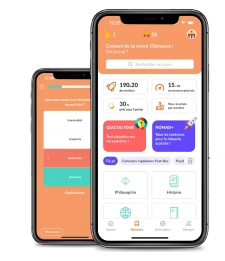In a professional setting, you will be confronted with graphs.
Types of graphs:
Bar chart: A graph that uses rectangular bars of varying heights or lengths to represent different categories or data points.
Line graph: A graph that uses connected data points to illustrate the relationship between two variables over time or across a continuous scale.
Pie chart: A circular graph divided into sectors, with each sector representing a proportion or percentage of a whole.
Axes: The horizontal and vertical lines that form the basis of a graph. The horizontal axis is usually referred to as the "x-axis," while the vertical axis is called the "y-axis."
Components of a graph:
Title: A descriptive heading that summarizes the main purpose or content of the graph.
Labels: Text used to identify specific parts of the graph, such as the axes, data series, or specific data points.
Legend: A key that explains the meaning of different colors, symbols, or line types used in the graph to represent different data series.
Scale: The range of values represented on the axes. It indicates the intervals or increments used for measuring and displaying the data.
Data points: Individual values or observations plotted on the graph.
Data series: Sets of related data points that are represented together on the graph. Each series is often depicted with a different color or symbol.
Graph analysis:
A trend: The general direction or pattern of the data points on the graph. It can be increasing, decreasing, or relatively stable (flat).
Peak: The highest point on a graph or the maximum value of a particular data series.
Trough: The lowest point on a graph or the minimum value of a particular data series.
Intercept: The point at which a line or curve on the graph intersects the x-axis or y-axis.
Slope: The steepness or incline of a line on the graph, representing the rate of change.
Scatter plot: A graph that displays individual data points as dots, showing the relationship between two variables.
Data range: The span between the minimum and maximum values displayed on the graph.
Data trendline: A line that represents the overall direction or trend of the data points on the graph. It can help visualize the relationship between variables.
Data outliers: Data points that significantly deviate from the general pattern or trend observed on the graph.


